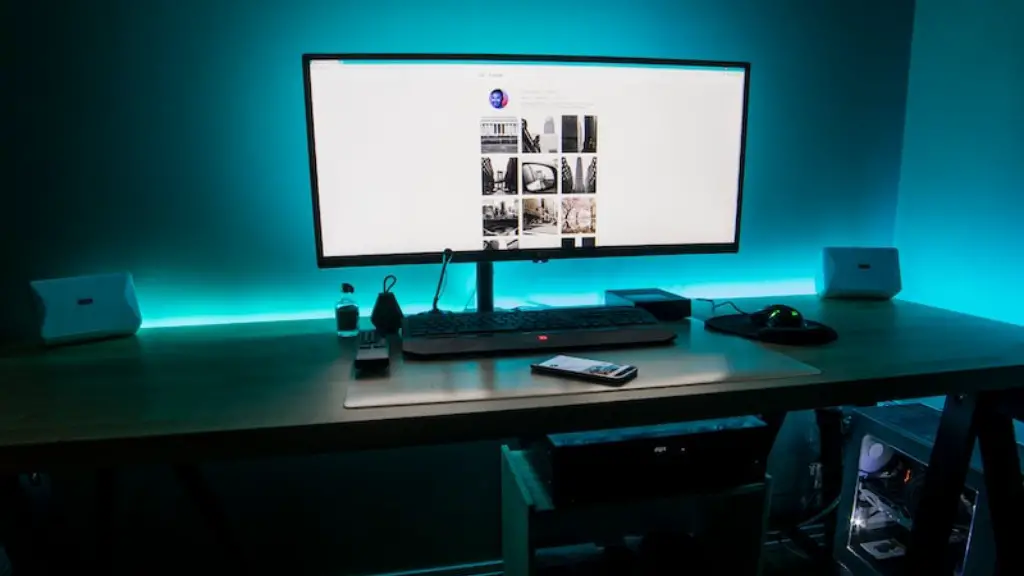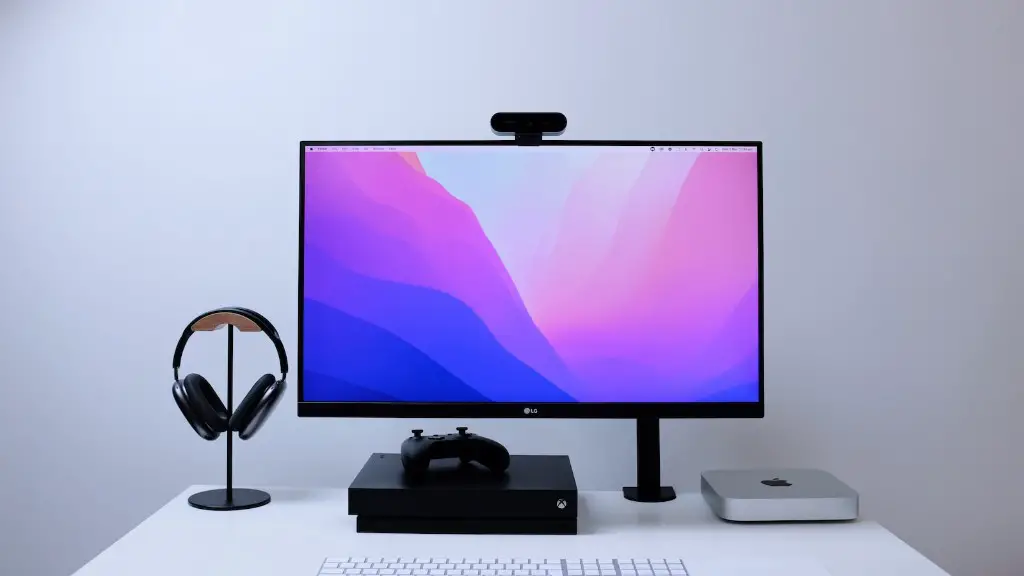Gaming monitors are often sold in terms of the refresh rate they offer, typically ranging from 60Hz up to 144Hz, and sometimes even faster. But what Hz is best for gaming? This can be an important decision, as higher refresh rates mean smoother gaming performance, better response time and less eye strain.
The vast majority of gamers should opt for a 144Hz monitor. 144Hz means images are refreshed 144 times per second (144 FPS), providing a considerable advantage over 60Hz monitors, where images are only refreshed 60 times per second (60 FPS). This means gamers will be able to see and react to action much faster than on a 60Hz monitor, resulting in smoother gaming performance.
It’s important to note, however, that 144Hz monitors are only beneficial if the graphics card can actually produce a frame rate of 144FPS or higher. If the graphics card can’t keep up, then a monitor with a lower refresh rate will provide better performance. In general, gaming at or above a refresh rate of 60Hz is considered ideal for most gamers.
Most gamers are also likely to benefit from a variable refresh rate (VRR) monitor. VRR monitors allow the refresh rate to be adjusted (within a specified range) based on the frame rate the graphics card produces. This eliminates the problem of screen-tearing and stuttering that can occur with a static refresh rate.
In general, if gamers are looking for a smooth gaming experience with reduced eye strain, then 144Hz monitors are the way to go. However, if the graphics card can’t keep up, then a lower refresh rate (e.g. 60Hz) may be preferable. VRR monitors provide additional benefits, as they allow the refresh rate to be adjusted (up to a certain limit) automatically.
Advantages of Higher Hz
The main advantage of higher Hz monitors is that they provide smoother gaming performance. This means images on-screen will be constantly updated and refreshed, which reduces the amount of motion blur and “smearing” caused by a lower refresh rate. This improves the clarity of fast-moving objects, resulting in better response times and improved overall gaming performance.
Higher Hz monitors also reduce eye strain as they offer reduced motion blur and improved clarity. This is due to the faster refresh rate which reduces the amount of screen “tearing” caused by low refresh rate monitors.
Finally, higher Hz monitors are generally preferred by competitive gamers, as they offer improved performance, faster response times, and less eye strain. This is particularly important for those who play in competitive tournaments, as any advantage over an opponent can be the difference between a win or a loss.
Disadvantages of Higher Hz
The main disadvantage of higher Hz monitors (compared to lower Hz monitors) is that they can be more expensive. As the refresh rate increases, so too does the cost of the monitor. This is particularly noticeable when going from 60Hz to 144Hz or higher, as prices can increase sharply.
Additionally, higher refresh rates require more powerful graphics cards to make full use of them. This means gamers will need to purchase or upgrade their graphics cards to match the refresh rate of the monitor. This extra cost, combined with the cost of the monitor, can be prohibitive for some.
Finally, for gamers who don’t play high-end games at a consistent framerate, or those who just don’t notice major differences in refresh rates, a 60Hz monitor will likely suffice. These monitors are less expensive and generally provide good performance with most game titles.
Is 144Hz Worthy of the Cost?
The simple answer is that this depends on the individual. 144Hz monitors are ideal for those who play high-end games and require maximum performance, as they offer smoother gaming performance, improved response time and reduced eye strain. However, they are more expensive and require more powerful graphics cards.
So, for gamers on a budget, or who don’t play high-end games, a 60Hz monitor may provide better performance for less cost. But for those looking for professional-level performance and the very best gaming experience, then a 144Hz monitor is likely worth the extra cost.
Understanding Refresh Rate Ranges
When shopping for gaming monitors, it’s important to understand the difference between the refresh rate and the maximum refresh rate. The refresh rate is the actual refresh rate of the monitor, while the maximum refresh rate is the fastest refresh rate at which the monitor can operate. In general, monitors with higher maximum refresh rates will be more expensive.
For example, a monitor might be advertised as a 144Hz monitor, but the maximum refresh rate could actually be higher. This means that the refresh rate of the monitor can be adjusted up to a certain limit, providing additional performance benefits. This is particularly true for VRR monitors, which allow the refresh rate to be automatically adjusted up to a certain limit.
It’s also important to note that the actual refresh rate of the monitor may not always match the advertised refresh rate. This is due to the fact that most monitors will adjust the refresh rate based on the frame rate the graphics card produces. This means that, in some cases, the actual refresh rate of the monitor can actually be lower than the advertised refresh rate.
Factors to Consider When Shopping for a Monitor
When shopping for a gaming monitor, there are a few important factors to consider. The first, and most important, is the refresh rate of the monitor. As mentioned, a 144Hz monitor will provide the best gaming performance, but the graphics card must be able to produce at least 144FPS to make full use of it. If the graphics card can’t keep up, then a lower refresh rate (e.g. 60Hz) may be preferable.
Another factor to consider is the display resolution of the monitor. A higher resolution will provide more detailed images on-screen, but will also require a more powerful graphics card to get the most out of it. Additionally, the display technology used in the monitor (e.g. IPS or TN) can also be a factor to consider, as each has advantages and disadvantages.
Finally, it’s important to consider the cost. Higher refresh rate monitors tend to be more expensive, as do monitors with higher resolutions. It’s also important to factor in the cost of any additional equipment that may be required (e.g. a more powerful graphics card). When shopping for monitors, it’s important to find one that provides the best performance for the cost.



